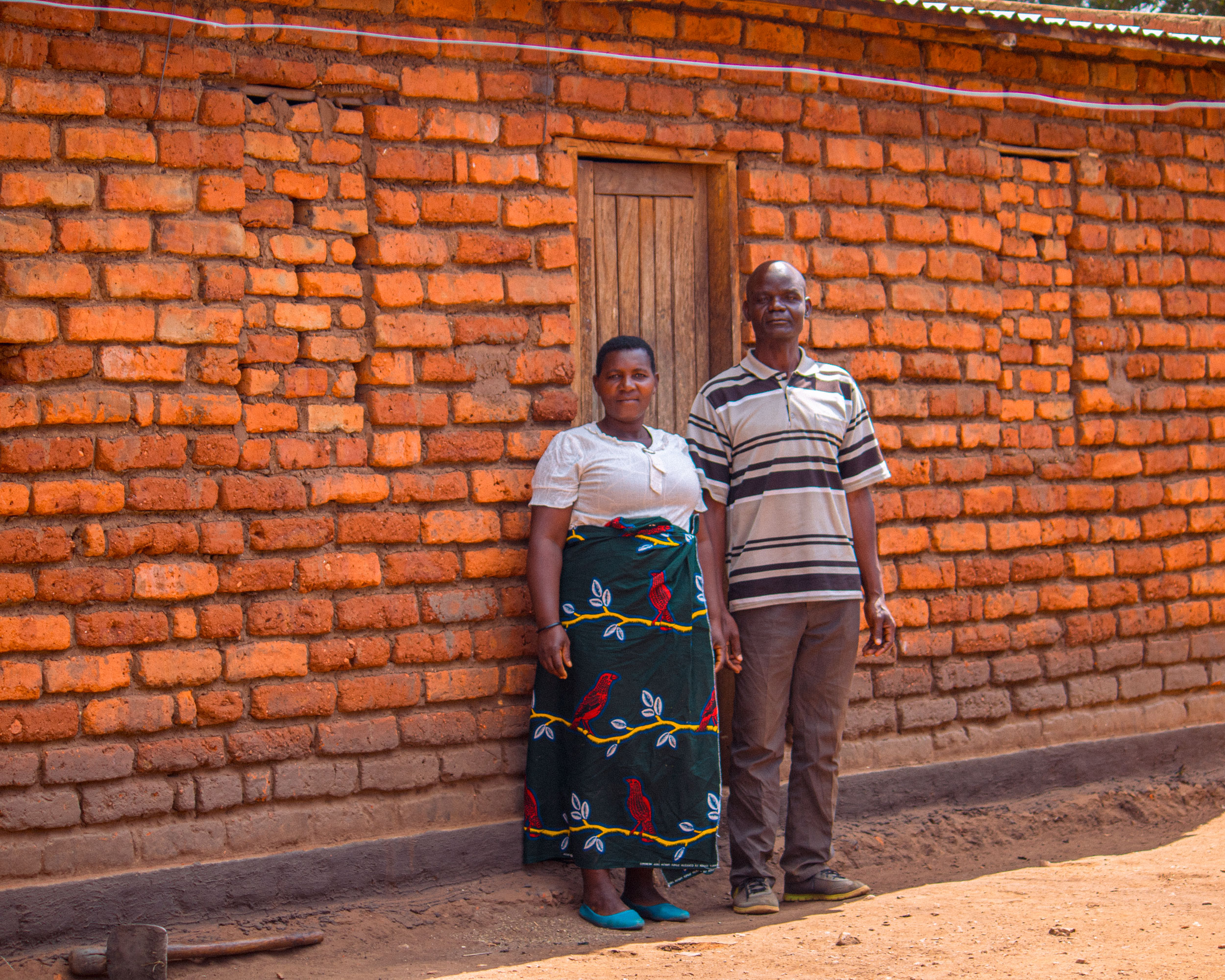CHANGING LEAD FARMERS’ LIVELIHOODS THROUGH CHITHUMBA

As part of Chithumba, the Lead Farmer (LF) model was introduced to smooth the programme’s implementation and support our Rural Marketing Advisors (RMAs) with supervising the participating Farmer Organisations (FOs). Each FO assigns one of its highest performing farmers as LF, who receives 15kg of seed and inoculant for a demo plot. If the FO fully repays the loan, it is exempted from the repayment of the demo plot.
The LF model has proved beneficial not only in boosting Chithumba’s repayment rates, but also in transforming LFs’ livelihoods. We sat down with Binwell Meyson, LF of Mangulu Cooperative in Dowa district, and Margaret Zima, LF of Kaning’A Network in Kasungu district, to get insight into their FOs’ and personal evolution with Chithumba.
Kaning’A Network was created in 2012 and operates as a club part of Chilanga Cooperative, a larger FO. In 2016 it started using both ACE services and Chithumba. While it had 30 members then, there are now 13 – 10 females and three males, including two youths – all of whom partake in Chithumba. This drop in membership is explained by the optimized farmer selection in the programme: anyone failing to repay the loan has been excluded. This approach has proven successful as now all members fully repay their loan.
At its inception in 2010, Mangulu Cooperative counted 98 members, and has now grown to 106 members. It first started using ACE trade services in 2018, then joined Chithumba in 2020 with 46 of its members. During the 2022-23 season, all 106 farmers participated in Chithumba, counting 57 youths.
FARMER ORGANISATIONS GROWING WITH CHITHUMBA
Several factors motivate FOs like Mangulu Cooperative and Kaning’A Network to join Chithumba. In fact, they receive certified seeds ahead of the season, RMAs help them develop a repayment plan and find good markets after harvest. LFs also receive several trainings, such as Good Agricultural Practices (GAP) and the ACE Marketing School (AMS), aimed at increasing yields and selling volumes. As their productivity and sales grow, farmers get better incomes to pay for their children’s school fees and uniforms, and to purchase fertiliser for maize.
During a good soya season, Binwell harvests 14 bags per acre, representing 700kg. As Chithumba farmers perform well over the seasons, they can receive more seeds and inoculant to increase their yields. Accordingly, he received inputs for two acres the past season, totaling 60kg of seeds instead of the regular 15kg for half an acre. Being part of Chithumba also enables farmers to safely store their harvest in a warehouse, where the quality can be maintained while waiting to sell on good markets at high prices. In particular, aggregating volumes as a cooperative is an opportunity to sell larger volumes through ACE at a competitive price to off-takers. That’s what Mangulu Cooperative did during the 2020-21 season, when the harvest was good enough to sell additional volumes. With the support of their RMA, they sold 2.8 tonnes of soya at 280 MWK/kg, resulting in a 784,000 MWK profit. The same season, Kaning’A Network managed to sell the same quantity at 520 MWK/kg, earning 1,456,000 MWK.
According to Margaret, aggregating volumes fosters a competitive mindset among the FO. Seeing and comparing the quantities brought by each farmer incentivizes farmers to improve their production, so they can bring more quantities the next season.
Working together for years, Chithumba accompanies cooperatives in their growth. In the case of Mangulu Cooperative, the retention rates within the FO and Chithumba have remained stable, and membership has even grown. With such committed members, the cooperative managed to repay 100% of its loan in 2021-22, which enabled it to have a 1:4 repayment ratio for 2022-23, instead of 1:5. Similarly, Kaning’A Network has also managed to repay 100% of the Chithumba loan, which has given it the opportunity to receive 10 tree seedlings twice, motivating members to continue performing well while restoring biodiversity.
LEAD FARMERS’ EVOLUTION
EXPANDING THIS SUCCESS
Both LFs want other farmers to thrive as well. This is the reason they keep motivating them after a bad harvest, promoting the use of adequate farming techniques, certified seeds, and pesticides. For Margaret, farming is a business, which is why she advises farmers to plan ahead for the coming season.
Beyond their improved livelihoods, Binwell and Margaret demonstrate how Chithumba can grow one’s aspirations in farming. With a consistent application of modern practices, open communication, and a drive to evolve, LFs’ success can also spill over to their fellow farmers.
